Short answer: some textbooks are infected with a misconception, the idea that electrons always orbit the individual metal atoms. Nope. They'll also tell you that electrons only jump between atoms when a voltage is applied along the wires. Wrong.
In metals, the outer electron(s) of each metal atom have left their original atom. This happens when the metal is first formed. If electrons kept sticking to each atom, then the metal would be an insulator, and at low values of current, the ohms wouldn't be constant. In reality, the outer or "conduction band" electrons are orbiting among all the metal atoms, all the time. A metal wire resembles a kind of "solidified plasma." Metals are weird.
Physicists call the metal's mobile electron-population by the name "electron sea" or "ocean of charge." In chemistry it's called the "metallic bond."
From a non-quantum viewpoint, we can view metal objects as being like containers filled with an "electric fluid," Ben Franklin-style! The metal's electrons are jittering around at high speed, wandering all around, much like the molecules of gas inside a hose. But this electron-motion is in random directions. It's a storehouse for thermal energy, but it has no single direction, so it's not "wind;" not electric current. For every electron going one way, there's another going backwards.
Therefore, an actual DC electric current in a metal is a slow average drift of this electron cloud. Individual electrons don't move slow of course. Instead they wander around at nearly the speed of light all the time. But during a DC current, their average wandering path has a tiny DC drift superimposed. Earth's atmosphere does the same: each molecule is moving at nearly the speed of sound, even in dead still conditions; no wind. We regard the wandering as "thermal," as Brownian Motion. Same with individual electrons in a metal.
A correct animation of atoms/electrons of metals would depict the electrons jumping in both directions for zero current. Or, show them wiggling back and forth across several atoms, with random motion during zero amperes. (Or, show the inside of the wire looking like 'television snow,' like flickering white-noise.) Then, during a DC current, the entire pattern of electrons will slowly slide along as a unit. The higher the amperes, the faster the flow. The "liquid white-noise" moves slow, like water in a pipe, but the individual particles never remain still.
Note that this picture DOES NOT APPLY TO ALL CONDUCTORS. It only applies to solid metals (the most common form of conductor used in electrical engineering), but not to salt water, acids, ground currents, human tissue/nerves, liquid metals, moving metals, plasma, sparks, etc. Electricity isn't electrons, that's why engineers and scientists use the "Conventional Current" which applies to all types of conductors. Electron-flow within metals is a special case of electric currents in general.
PS
Note that electrons aren't invisible! (In fact, electrons are about the only things that are visible.) So, whenever we look at a bare wire, we're seeing its electron-sea. The mobile electrons are extreme reflectors of EM waves. The "metallic" look of a metal surface is our view of the free electrons. So, electrons are like a silvery fluid. During electric currents in a metal, it's the silvery stuff that flows along. But there's no dirt or bubbles in this flow, so although we can see the "fluid," we can't see its motion. (Heh, even if we could see something moving, the charge-drift would be too slow to notice; like the minute hand on a clock!)

